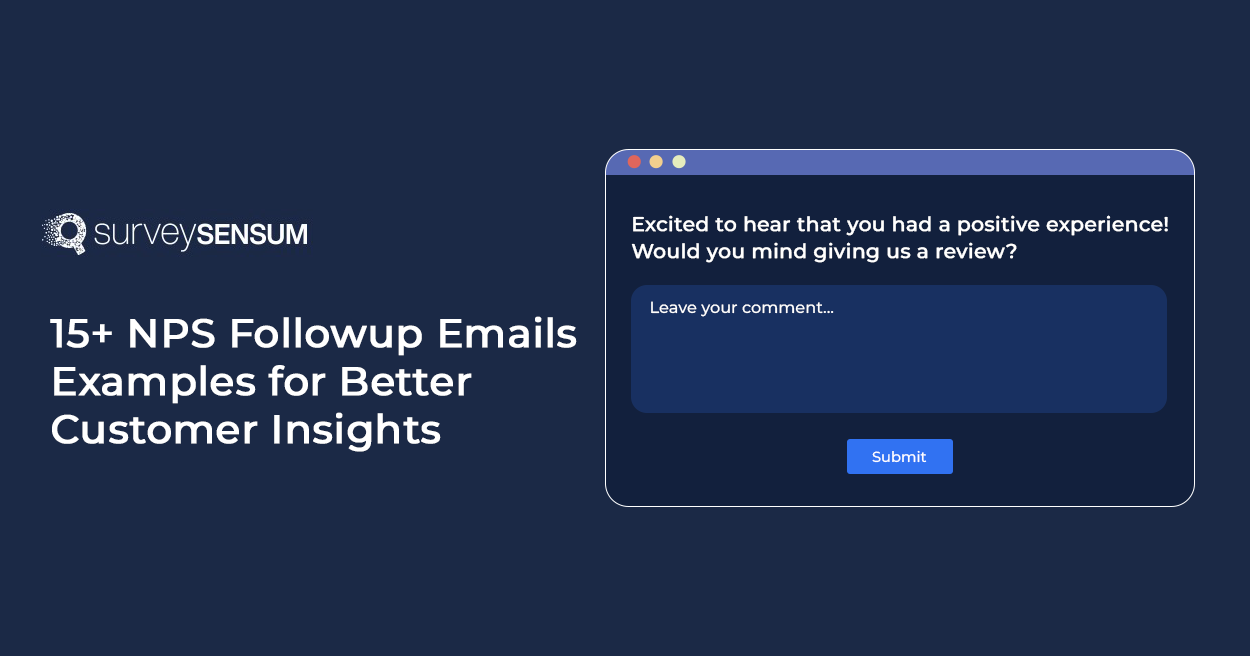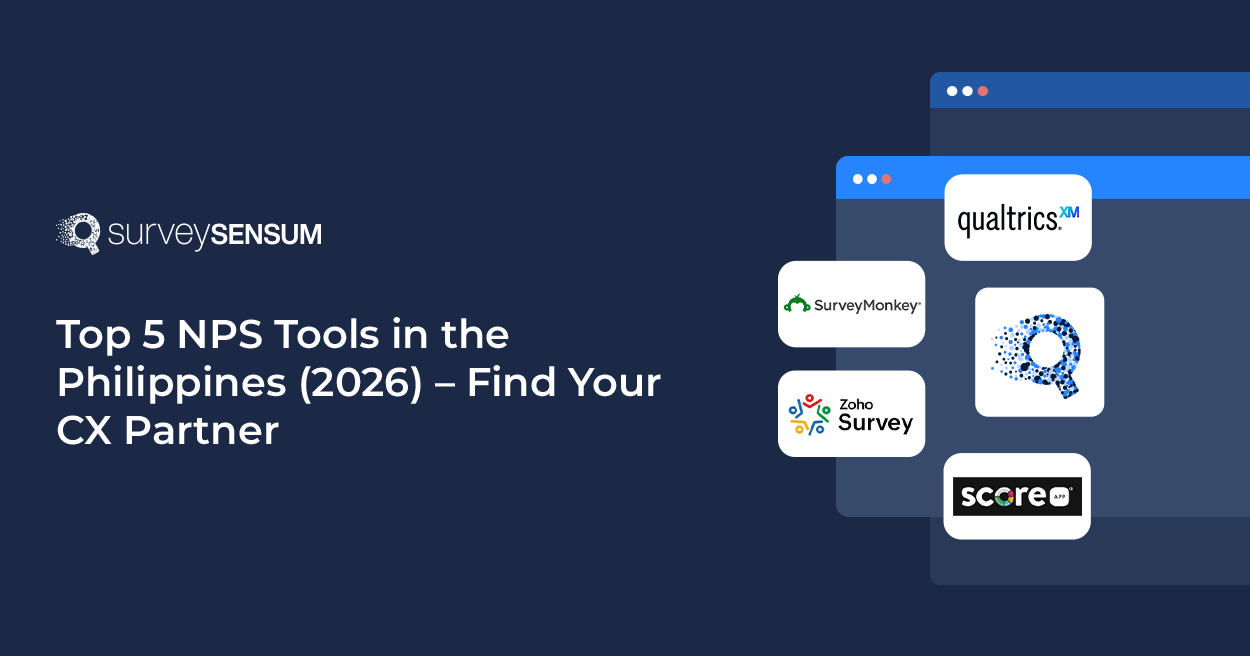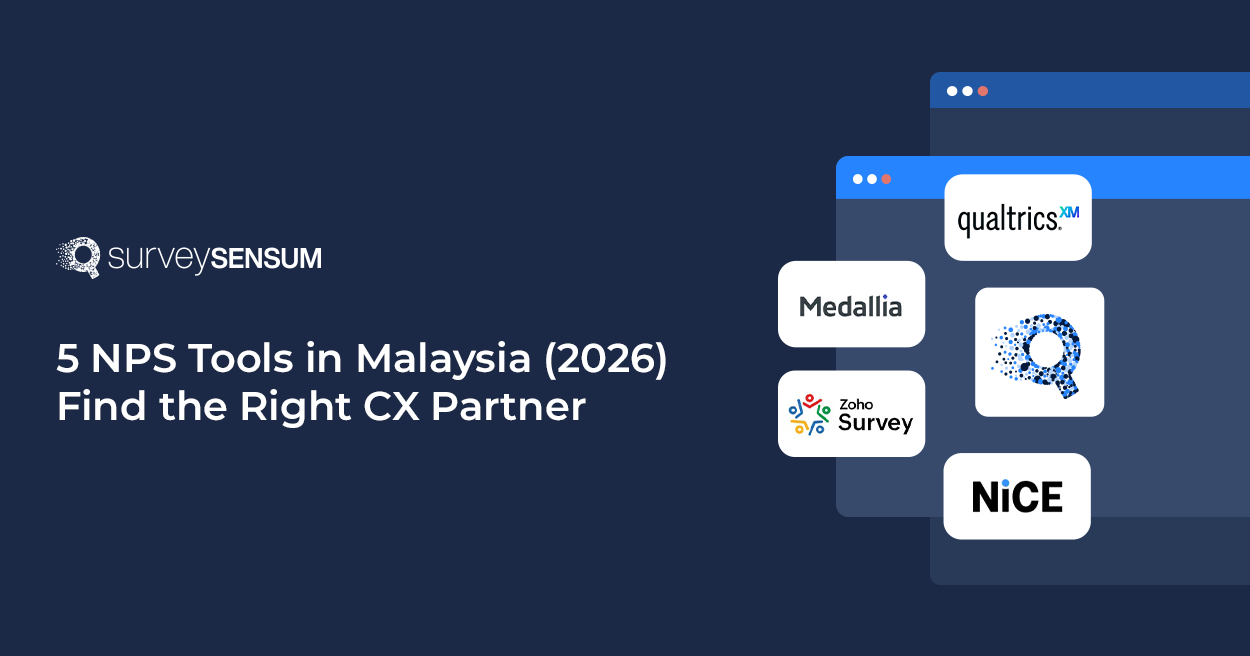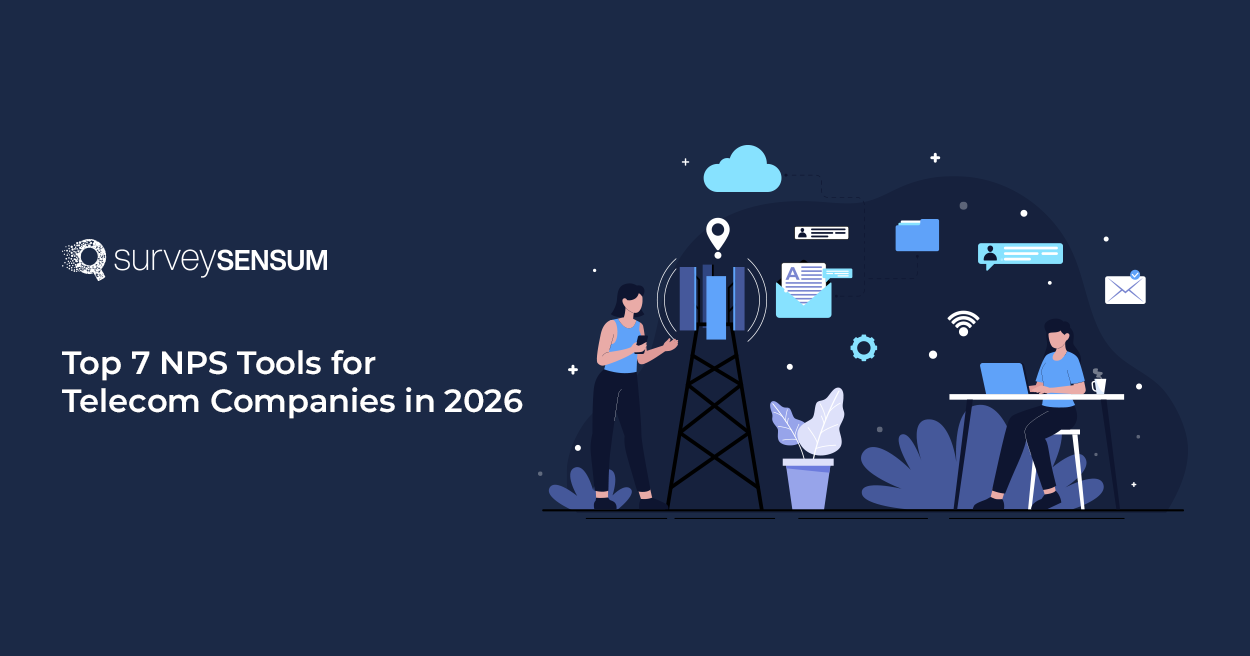

Companies that close the feedback loop see 3x more promoters. Ignoring feedback leads to a loss of momentum — Promoters lose enthusiasm, Passives remain neutral, and Detractors can become louder in their criticism.
To fix this, launch targeted NPS follow-up emails. These emails drive real engagement, turning insights into action and building lasting loyalty. By tailoring follow-ups to Promoters, Passives, and Detractors, you strengthen relationships and boost growth.
Without further ado. Let’s explore NPS follow-up email templates for each segment and dive in to turn those scores into loyalty and growth!
What is an NPS Followup Email?

An NPS follow-up question is an open-ended question asked after the NPS loyalty question – how likely they are to recommend your product or service on a scale from 0 to 10. The follow-up question helps you understand the reason behind customers’ scores.
It’s a valuable metric to gather actionable insights because it:
- Shows what’s working: Happy customers share what they like, so you know what to keep doing.
- Highlights areas to improve: Passive customers suggest changes that could make things better.
- Reveals problems: Unhappy customers point out issues that need attention.
- Guides decision-making: This feedback helps businesses focus on what matters most for customer satisfaction.
To maximize effectiveness, tailor the follow-up email to the customer’s NPS score category — Promoter, Passive, or Detractor. This personalization ensures the response is relevant and addresses their specific experience:
- Promoters: Thank them for their support and inquire about what they love about your service.
- Detractors: Acknowledge their concerns, offer solutions or compensation, and invite them to provide more detailed feedback to resolve their issues.
- Passives: Explore their reservations and seek ways to enhance their experience, aiming to convert them into loyal supporters.
By sending these targeted follow-up emails, you enhance customer satisfaction, foster loyalty, and improve your business processes based on real feedback.
Importance of Sending NPS Follow-Up Emails
NPS followup emails are crucial for making the most out of your survey feedback. Here’s why they matter:
- Close the Feedback Loop: Follow-up emails show customers that you value their feedback. By acknowledging their input and explaining what changes you’re making, you let them know their opinions matter.
- Personalize Engagement: These emails help you connect with different types of customers. Thank your loyal promoters, offer incentives to passives, and address concerns from detractors with solutions. This personalized approach keeps customers engaged and improves their experience.
- Drive Improvement: Use feedback from follow-up emails to spot trends and make improvements. This helps you improve your products or services and enhance the overall customer experience.
- Build Trust: Transparent communication about how you’re acting on feedback builds trust. Customers appreciate knowing that their opinions lead to real changes.
- Boost Customer Loyalty: Engaging with your Promoters through follow-up emails helps you understand what they love about your brand. This information helps you reinforce their loyalty and encourage them to spread positive word-of-mouth.
This highlights NPS follow-up emails are essential for turning feedback into action and strengthening customer relationships. Therefore, to send NPS emails to a large group of people quickly, you can use a bulk email sender for maximum efficiency and outreach. Before sending these campaigns, it’s also wise to run an email deliverability test to ensure your messages actually reach your customers’ inboxes. Now let’s have a glance at examples for each category of NPS respondents.Now let’s have a glance at examples for each category of NPS respondents.
NPS Followup Email Examples for Promoters
NPS follow-up emails for promoters are messages you send to your most enthusiastic customers. These are the people who rated you highly and love what you do. By reaching out to them, you can build on their positive feelings and encourage them to continue supporting your brand. Here’s how to make the most of these NPS emails:
1. Thank You and Referral Request
This email shows your gratitude and encourages promoters to spread the positive word. By offering a reward for referrals, you turn their enthusiasm into actionable benefits for both your company and the customer.
Subject: Thank You for Your Amazing Feedback!
Body:
Hi [Customer’s Name],
Thank you for the fantastic feedback! We’re thrilled to know you love our [product/service]. Your support means the world to us.
If you know anyone who might benefit from [product/service], we’d be grateful if you could pass the word along. As a token of our appreciation, we’re offering [discount/reward] for every new customer you refer.
Thanks again for being such a great supporter!
Best regards,
[Your Name]
[Your Company]
2. Request for a Review
Asking for a review leverages the customer’s positive experience to influence potential buyers. Reviews build credibility and can attract new customers, helping you grow your business.
Subject: We’d Love to Hear More About Your Experience!
Body:
Hi [Customer’s Name],
We’re excited to hear that you had a positive experience with [product/service]! Would you mind sharing your thoughts in a review? Your feedback helps others make informed decisions and motivates our team.
Here’s a link to leave your review: [Review Link].
Thanks for your support!
Warm regards,
[Your Name]
[Your Company]
3. Exclusive Offer for Promoters
Offering an exclusive deal rewards promoters and strengthens their loyalty. It also encourages them to continue engaging with your brand and to share their experiences with others.
Subject: Enjoy an Exclusive Offer Just for You!
Body:
Hi [Customer’s Name],
Thank you for your wonderful feedback! As a token of our appreciation, we’re excited to offer you an exclusive [discount/early access] to our new [product/service].
Use code [CODE] at checkout to claim your offer.
We’re grateful for your support and can’t wait to hear what you think of our new [product/service].
Best wishes,
[Your Name]
[Your Company]
4. Invitation to a Special Event
Inviting promoters to an event fosters a deeper connection and shows appreciation for their support. It helps build a community around your brand and can turn loyal customers into brand advocates.
Subject: You’re Invited: Join Us for a Special Event!
Body:
Hi [Customer’s Name],
We appreciate your great feedback and would love to celebrate with you! You’re invited to join us for [event name], where we’ll [describe the event].
Date: [Date]
Time: [Time]
Location: [Location]
Please RSVP by [RSVP Date]. We hope to see you there!
Thank you for being a valued supporter!
Best,
[Your Name]
[Your Company]
Create targeted NPS follow-up emails for Promoters with SurveySensum. This tool automates email responses and analyzes feedback to enhance customer satisfaction hassle-free
NPS Follow-Up Emails Examples for Passives
NPS follow-up emails for passives target customers who are neutral in their feedback—neither enthusiastic nor dissatisfied. These emails are crucial for engaging passives and turning them into more loyal advocates. Here’s how to effectively reach out to them:
1. Personalized Check-In
A personalized check-in shows you care about their experience and are willing to make improvements. It enhances customer satisfaction and engagement, potentially turning passives into promoters.
Subject: How’s Everything Going with [Product/Service]?
Body:
Hi [Customer’s Name],
We noticed you rated us 7 in our recent survey. We appreciate your feedback and want to make sure everything is going well with [product/service].
Is there anything we can do to improve your experience? Your insights are important to us, and we’re here to help.
Looking forward to hearing from you!
Best,
[Your Name]
[Your Company]
2. Exclusive Offer to Enhance Experience
Offering an exclusive deal can nudge passives towards greater satisfaction. It provides added value, encouraging them to engage more actively with your brand and improve their perception.
Subject: Special Offer to Enhance Your Experience!
Body:
Hi [Customer’s Name],
Thank you for your recent feedback! To help make your experience with [product/service] even better, we’re offering you a special [discount/offer].
Use code [CODE] at checkout to redeem your offer.
We hope this makes your experience more enjoyable!
Sincerely,
[Your Name]
[Your Company]
3. Request for Detailed Feedback
Requesting detailed feedback helps identify specific areas for improvement. This approach not only addresses potential issues but also demonstrates that you value their opinion and are committed to enhancing their experience.
Subject: We’d Love More Details on Your Experience
Body:
Hi [Customer’s Name],
We noticed your feedback was neutral. To better understand how we can serve you, could you provide a bit more detail about your experience with [product/service]?
Here’s a link to a brief follow-up survey: [Survey Link].
Your feedback will help us make improvements.
Thanks for your help!
Best regards,
[Your Name]
[Your Company]
4. Invitation to a Feedback Session
Inviting passives to a feedback session allows for in-depth discussion and can uncover insights that surveys might miss. It helps build a relationship and shows that their opinions matter.
Subject: Join Us for a Feedback Session!
Body:
Hi [Customer’s Name],
We appreciate your feedback and would love to hear more about your experience with [product/service]. We’re hosting a feedback session and would be thrilled if you could join us.
Date: [Date]
Time: [Time]
Location: [Location]
Please let us know if you can make it!
Best,
[Your Name]
[Your Company]
Create targeted NPS follow-up emails for Passives with SurveySensum. This tool automates email responses and analyzes feedback to enhance customer satisfaction hassle-free
NPS Follow-Up Emails Examples for Detractors
NPS follow-up emails for detractors target customers who have expressed dissatisfaction. These emails are crucial for addressing issues, recovering customer relationships, and improving overall satisfaction. Here’s how to handle these important communications effectively:
1. Apology and Resolution Offer
Apologizing and offering to resolve the issue demonstrates empathy and commitment to customer satisfaction. It can help recover the relationship and potentially turn detractors into loyal customers.
Subject: We’re Sorry and Ready to Make It Right
Body:
Hi [Customer’s Name],
We’re sorry to hear about your recent experience with [product/service]. Your feedback is crucial, and we want to make things right.
Please share more details about what went wrong here. We’re committed to resolving the issue and ensuring you’re satisfied.
We will improve and make your experience better.
Best regards,
[Your Name]
[Your Company]
2. Direct Request for Feedback on Issues
Requesting detailed feedback allows you to understand the root causes of dissatisfaction. This information is crucial for making targeted improvements and showing a genuine interest in resolving issues.
Subject: Help Us Understand Your Concerns Better
Body:
Hi [Customer’s Name],
We noticed your recent feedback was less than positive. To better address your concerns, could you provide more details about what didn’t meet your expectations?
Here’s a link to a short follow-up survey: [Survey Link].
Thank you,
[Your Name]
[Your Company]
3. Follow-Up on Resolutions
Following up after resolving an issue ensures that the customer feels heard and valued. It helps maintain transparency and can restore trust, showing that you are dedicated to continuous improvement.
Subject: How Did We Do? Follow-Up on Your Recent Issue
Body:
Hi [Customer’s Name],
We wanted to check in and see if the recent issue with [product/service] has been resolved to your satisfaction. Your feedback helps us improve and ensure we’re meeting your needs.
Please let us know if everything is now okay or if further assistance is needed.
Thank you,
[Your Name]
[Your Company]
4. Invitation to Speak with a Manager
Offering a direct line to management shows that you take their concerns seriously and are willing to engage in a meaningful dialogue. It can help resolve complex issues and demonstrate a high level of customer care.
Subject: Speak with a Manager to Resolve Your Concerns
Body:
Hi [Customer’s Name],
We understand your recent experience with [product/service] was disappointing. To ensure we address your concerns thoroughly, we’d like to arrange a call with a manager.
Please let us know a convenient time for you, and we’ll set up a meeting.
Looking forward to resolving this with you,
[Your Name]
[Your Company]
Create targeted NPS follow-up emails for Detractors with SurveySensum. This tool automates email responses and analyzes feedback to enhance customer satisfaction hassle-free
But what if your customers don’t respond to your emails? It’s time to send them a reminder.
Reminder NPS Follow-up Emails
Reminder emails play a vital role in increasing your NPS survey response rates. Customers often overlook or forget to complete the survey initially, and a gentle reminder encourages them to take action. By sending a follow-up reminder, you not only boost the chances of gathering more responses but also enhance the quality of customer insights.
Here’s how your reminder email should look like:
Subject: Quick Reminder: We Value Your Feedback!
Hi [Customer Name],
We noticed that you haven’t had the chance to fill out our quick survey yet. Your feedback is incredibly important to us and helps us improve your experience with [Product/Service].
The survey takes less than a minute, and we’d really appreciate hearing your thoughts. You can complete it here: [Survey Link]
Thank you for your time and for helping us make [Product/Service] better for you!
Best regards,
[Your Name]
[Company Name]
By sending these reminder emails you can boost survey participation and gather the valuable insights you need to enhance your product or service.
Conclusion
Sending NPS followup emails is key to turning feedback into action. These emails help you close the feedback loop, personalize your communication, and address any concerns. This boosts customer satisfaction and loyalty and gives you valuable insights to improve your business.
To enhance your NPS follow-up, consider using a robust NPS software, SurveySensum. This tool makes it easy to design and manage surveys. With features like NPS automation, customizable workflows, and AI-driven Text and sentiment analysis, SurveySensum helps you make the most of your feedback. It turns customer input into actionable insights, improving your follow-up strategy and strengthening customer relationships.

















